Where do lingonberries grow?
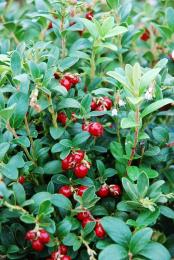
If you are a resident of Siberia, the Far East, the Caucasus or the tundra, then you know exactly where lingonberries grow. This beautiful red berry loves mixed coniferous dry forests, peat bogs and shrubs; less often it can be found in the swampy forests of northern Russia.
Content:
- Description
- Application
- Healing berries in the garden
- Soil preparation
- Reproduction
- Watering
- Pruning, windbreaks and garden compositions
Description
Cowberry is an evergreen subshrub of the lingonberry family, it reaches a height of 20-25 cm, has alternate, leathery, thick, overwintering leaves. Lingonberry flowers are very small, bell-shaped, white-pink in color with a pleasant faint odor. The fruits have a regular spherical shape and reach 8 mm in diameter. The berries are bright red, with a shiny glossy surface.
Lingonberries ripen around the beginning of September, but even unripe fruits can be made to turn red; for this, the berries are placed with red aromatic fruits and red tomatoes, they emit ethylene, this gas stimulates the redness of lingonberries.
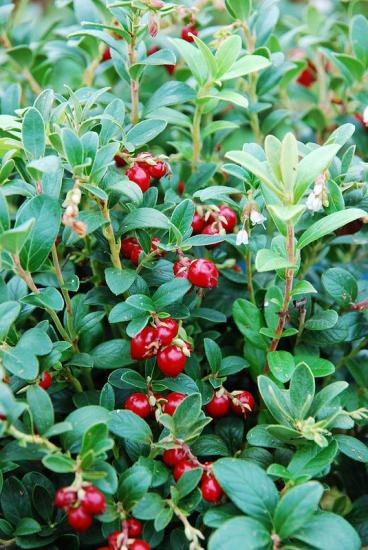
Subshrubs are long-lived, forming a clan underground from the roots of several lingonberry plants; they can live for more than two centuries. The population is regularly updated, new bushes appear, and old ones die off. Where lingonberries grow separately, without a clan, their bush will not live very long - no more than 10 years.
Application
In ancient times, lingonberries were used in Rus' for food purposes, as well as in medicinal, especially in the North.Lingonberry juice was used for scurvy and rheumatism, and the leaves of the plant were used to prepare decoctions for the treatment of diseases of the bladder and kidneys. In addition to fresh berries and leaves, the fruits were dried and stored for the winter to make medicinal decoctions.
Healing berries in the garden
Nowadays, you won’t surprise anyone with lingonberry berries for meat dishes; they are often on sale in large supermarkets. But have you noticed that berries are exported from Germany and the Baltic states? For these countries, industrial cultivation of lingonberries is by no means exotic.
Soil preparation
Grow lingonberries in garden plots you can do the same as garden blueberries. To do this, an acidic soil environment is prepared, and several bushes are planted in the planting hole. The land for each plot must be prepared as follows:
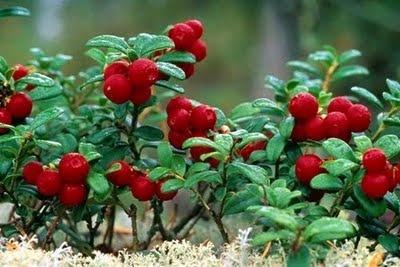
- 1 square meter of the top layer is removed with the bayonet of a shovel;
- On oilcloth or in a stretcher this layer is mixed with red acidic peat and sand;
- The prepared mixture is poured into the hole, then trampled down and wetted well.
Reproduction
Plants can be started from store-bought berry seeds. Of course, you won’t know the name of the variety then. But such seeds already germinate easily (they have been stratified by freezing). Now several varieties of lingonberries have already appeared in seed stores and stalls: Red Pearl, Ruby, Ida and Coral. Over time, the range will increase as demand steadily rises.
It is easy to expand existing lingonberry plantings using root layering and cuttings.
Vegetative propagation begins in the spring. Lingonberries, like cranberries, are creeping plants; rooting of shoots occurs easily. Cuttings are cut into 5-6 nodes. The lower 2-3 nodes are freed from leaves and buried in the shade under a jar or plastic bottle.By ensuring constant humidity, by autumn, new lingonberry bushes are obtained, which will begin to bear fruit in a year.
Watering
It is preferable to provide regular watering, or even better with rainwater, to reduce carbonate content. Every week it is necessary to add acid to the irrigation water, in spring and autumn add acidic peat, sawdust and pine litter in the form of a mulching layer.
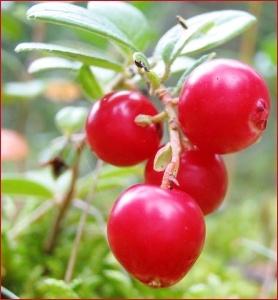
It has been noted that sprinkling irrigation is less favorable than drip irrigation. Apparently, for their survival, heathers and lingonberries actively grow beneficial fungi in the root zone, and sprinkling from above causes damage to the upper part of the plants by parasitic fungi.
Pruning, windbreaks and garden compositions
For a stable harvest It is recommended to carry out anti-aging pruning of branches older than 8 years. Some gardeners support the branches with low supports and form rows like small vineyards. For the winter, the support is removed and the lingonberry branches are pinned to the ground.
For better pollination of lingonberries and the creation of a microclimate, the plantings are protected with conifer plantations. Arborvitae, junipers, pines, and spruces are suitable here. Such plantings will provide easy ventilation after rain and protect lingonberries and heathers from strong gusts of wind.
Lingonberries are decorative in any season, as they do not shed their leaves for the winter. Rhododendrons look great between a group of conifers and a berry meadow. Heathers and Ericas are planted in the foreground. And to fight weeds, the soil around the plantings is densely mulched with coniferous bark.
As you can see, lingonberries grow in acidic soils and require moist, loose soil. Its bushes resemble boxwood bushes, which by September are decorated with beautiful large berries.An amazing plant for its year-round decorative value and range of useful properties.

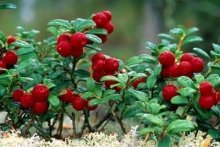
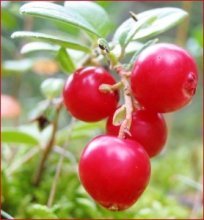
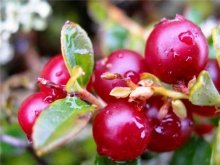
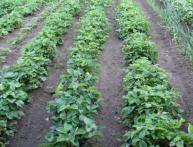
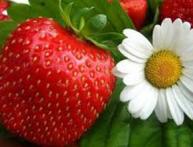

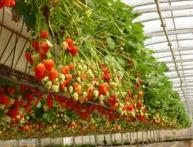
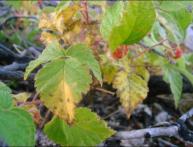

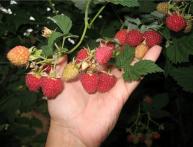
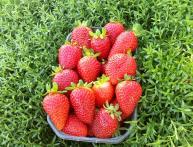
Comments
Every year we prepare lingonberries for the winter. You can make jam from it, you can just pour cold water on it, and it will stand like that over the winter, because... This berry is a good antiseptic; you can grind it and add sugar. Lingonberries make a very tasty fruit drink, which is indispensable for colds.
In which regions does it generally grow? I would like to pick some lingonberry leaves somewhere.
In general, lingonberries are also found in the middle zone, but there are much more of them in the northern regions. I live in the Tver region, I saw lingonberries here, but there weren’t many of them, in some regions they collect them in buckets, but here we don’t. But if you only need leaves, then you won’t need much; you can look, as it is written here, in dry coniferous forests and peat bogs. But in general, you can just buy the leaves at the pharmacy if you can’t find lingonberries in your area.
I lived in the north, there is a city called Susuman in the Magadan region, and there are a lot of lingonberries growing there. We collected it as a family, froze it, made jam, and just ate it. There were even collection points for this healthy berry.
We lived in the North and I know very well how lingonberries grow. She loved collecting it and, of course, eating it in any form. Very tasty.
I didn’t even think about the fact that you could grow lingonberries on your own plot. I read the article and realized that I would definitely grow lingonberries.
I already have two blueberry bushes growing on my plot. We have been eating these berries for two summers now. The yield is good.Now I’m thinking that I should try planting a couple of lingonberry bushes, although I used to think that they only grow near swamps.